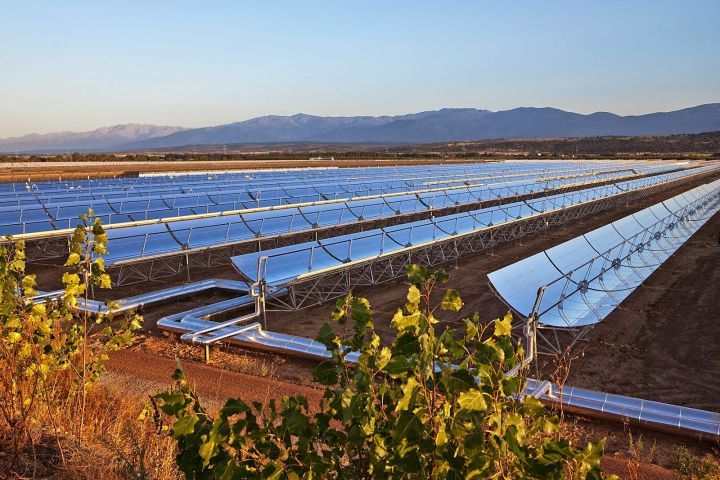
The enormous power plant will focus entirely on renewable energy, so that through a combination of solar, hydro, and wind power, Morocco will source more than half of its energy from renewable sources by the year 2020. Currently, Morocco imports 94% of its energy as fossil fuels from resource-rich regions around the world, according to Moroccan environment minister Hakima el-Haite. Such a high import level is costly, but for a country mostly dominated by desert land, solar has started to look like an enormous environmental and economic opportunity.
In Arabic, the world “noor” means light, so each phase of development on the plant follows plans named Noor 1 through 4 as the four solar parks complete construction and link to form a consolidated plant. The first phase, Noor 1, involves the installation of more than 500,000 mirrors arranged in 800 rows to track the sun as it passes across the desert sky each day. Every mirror in the array measures in at 12 meters high, and will be affixed to a steel pipeline that utilizes an ultra-hot heat transfer solution to create steam. The synthetic thermal oil solution is heated to 393 degrees Celsius, and as it makes its way through the pipeline system, it coils into a heat engine where it is combined with water to create the steam that powers the turbines that create usable energy.
Noor 2 and 3 are scheduled to begin in 2017. The final four plants that will make up the completed renewable energy complex by 2020 will take up as much space as Morocco’s capital city of Rabat. Space aside, the power plant will also generate up to 580 Megawatts of electricity, which is enough energy to power an estimated 1 million Moroccan homes. When all is said and done, the plant will receive $9 billion in investments from international financial institutions like the World Bank. Moroccan government guarantees have also been set up to back the project and its external funding, and King Mohammed VI has established energy subsidies so that the great cost of becoming the a global solar superpower isn’t transferred to Moroccan citizens.
A specialized heat tank loaded with molten sands means the Noor 1 array will be able to store heat energy for up to three hours. For obvious reasons, solar cells can’t produce energy once the sun goes down, so the plant’s heat tank was built into the plan so that Moroccan homes will be able to source renewable energy into the evening hours. Subsequent phases of the project will expand on the technology laid down in Noor 1, eventually storing energy for up to eight hours so that Morocco and even neighboring nations will be able to run 24/7 on solar energy. While Moroccan government ministers explore high-tension transportation lines that would enable the exchange of these renewable energy resources, King Mohammed VI reportedly has his sights set on Mecca as the plant’s ultimate energy goal.
Editors' Recommendations
- ‘World’s largest sundial’ to double as green energy provider
- Australia is building one of the world’s largest batteries using Tesla tech


